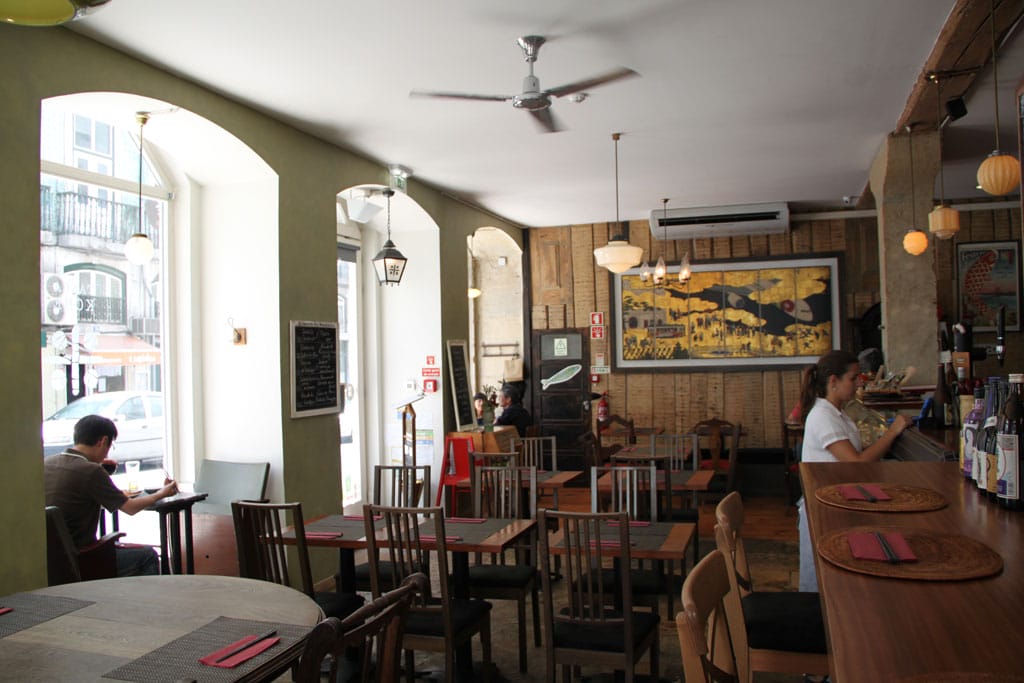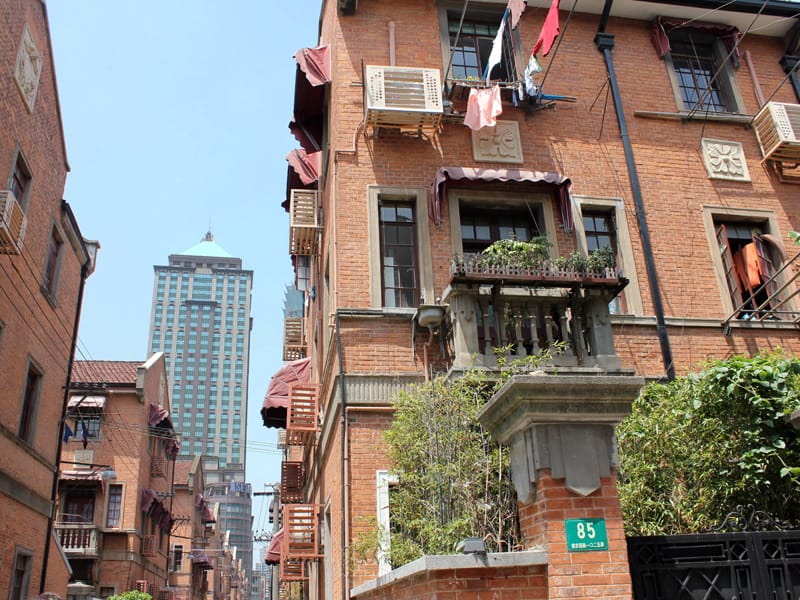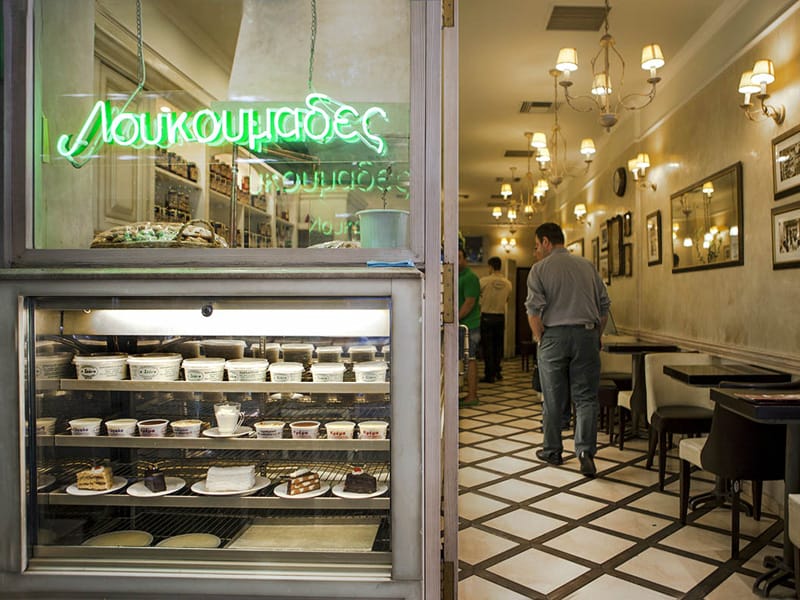Editor’s Note: This spot is sadly no longer open.
After almost a century of desertification, it’s sometimes hard to believe the state of downtown Lisbon – Baixa – today. Hotels, startups, boutiques and restaurants are exploding up and down these long, narrow avenues, which have a plan similar to that of 18th-century Parisian thoroughfares and were abandoned by the 1990s. As the few remaining owners of the old light fittings shops and cheap canteens pray to the gods of damage limitation, a few of the new businesses do fit well into the surroundings. Japanese canteen Tasca Kome is one of them.
Like all typical Portuguese tascas – traditional taverns and bars that serve food – the atmosphere at Tasca Kome is cozy and friendly. The owner is always there to serve or do other tasks, and there is a steady stream of loyal, local customers. The fact that it serves high-end Japanese food and whisky instead of the traditional meat, fish and beer doesn’t detract from its intimacy.
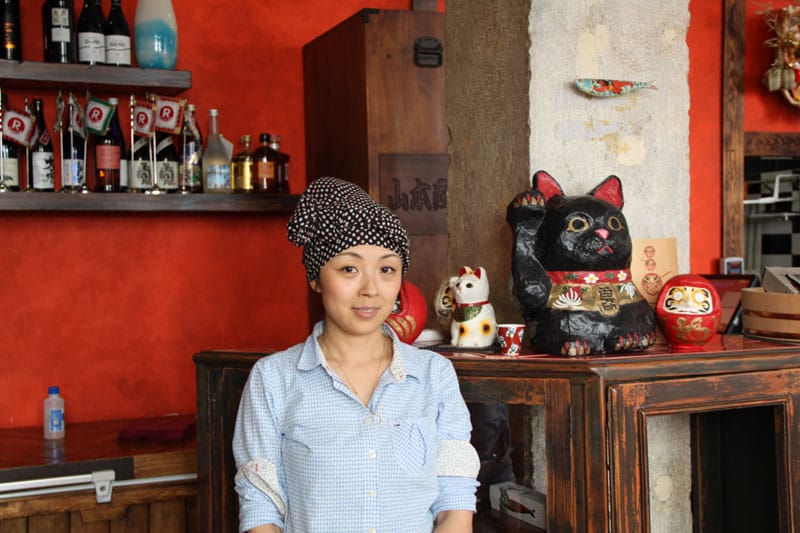
Tasca Kome is located in a typical building built in the Pombaline style – earthquake-resistant multi-use buildings with neoclassical elements named after Marquês de Pombal, an influential minister and driving force behind the reconstruction of the central area after the 1755 Lisbon earthquake. Maintaining the typical large dimensions of this ground-floor commercial space, this 10-table restaurant with counter seating is a top choice for its variety of Japanese specialities, some fused with local ingredients and techniques.
Owner Yuko Yamamoto has a passion for experimentation and composition and uses almost entirely organically grown ingredients. “As well as having my own distributor, I go to the Principe Real mercado biologico once a week. The fish is mainly from the Azorean archipelago,” she says. Yamamoto, originally from Osaka, moved to Portugal 12 years ago to study the language and stayed. She cooked for a hobby. After many requests from friends, she started organizing informal sushi and Japanese food workshops, before opening the doors of her home for supper club events where she served carefully devised tasting menus. She opened Tasca Kome in 2012.
On a recent visit, we tried the daily lunch menu: salmon fillet marinated in soy sauce and mirin (sweet rice wine), accompanied by a minimal combination of spinach and winter melon, a native Asian fruit eaten also as a vegetable and which grows well in Portugal. Another expertly fused dish is the Japanese-style ceviche of mackerel, one of the most common fish from the Portuguese coast, prepared with miso and ginger. The tempura is also particularly good, as Yamamoto is skilled at controlling the temperature during frying.
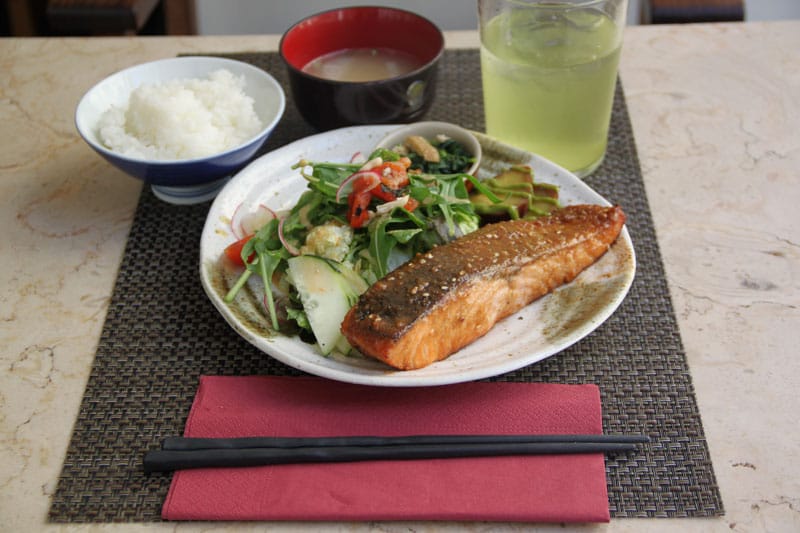
One must-order is traditional Osakan takoyaki, a griddled ball-shaped snack made of wheat flour-based batter and filled with diced local octopus. “Takoyaki was a big success on the annual Japanese day last year. We had 200 people outside queuing for four hours.” This event, organized by the Japanese embassy to celebrate Japan’s culture and its lusophone ties, has an important gastronomic dimension, with Tasca Kome one of the key restaurants taking part. The Castella cake, the green tea version of which is sold at the counter at the restaurant, is a great example of this melded history. Now a speciality of Nagasaki, the cake was brought to Japan by Portuguese merchants in the 16th century (the Japanese name translates as “bread from Castella”).
The restaurant’s minimal yet cozy interiors are designed by Yamamoto’s husband, who is also behind the restaurant’s star decoration piece – a large painting depicting some of Lisbon’s iconic structures on a traditional Japanese byōbu, or folding screen.
Published on August 15, 2016
Related stories
November 16, 2012
ShanghaiEarlier in 2012, Jing’an Villas – a square, block-sized 1930s-era housing area in the heart of downtown Shanghai – survived an ironic plan that called for permanently relocating all of its 3,000-plus residents in order to better “preserve” the historic neighborhood. Luckily, the plan was shot down in a party committee meeting. For now, at…
February 26, 2016
Mexico CityUpdate: This spot is sadly no longer open. Deservedly famous for its rich food traditions, the state of Oaxaca is one of our favorite culinary destinations in Mexico. But with Oaxaca City lying nearly 300 miles southeast of Mexico City, we’re always on the lookout for places to satisfy our appetite for Oaxacan cuisine in…
October 30, 2012
AthensThere are places that have been around so long that they've become emblematic of a city’s entire eating culture. In Athens, Stani (meaning "sheepfold" or "barnyard," depending on your definition) is certainly one of them. It may have a rustic-sounding name, but this wonderful, old-fashioned dairy bar – in business since 1931 – is an…







































